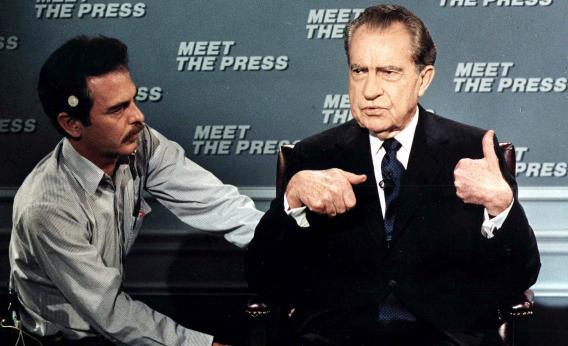Carl Bernstein and Bob Woodward – who as young reporters in the 1970s broke the Watergate scandal and helped sink the presidency of Richard Nixon – celebrated the infamous break-in’s 40th anniversary with a detailed retrospective in Sunday’s Washington Post, where they laid out the scope and depth of Nixon’s anti-Semitism, rage, and paranoia, and explained how he was even worse than we thought:
John N. Mitchell, Nixon’s campaign manager and confidante, met with Liddy at the Justice Department in early 1972, when Mitchell was attorney general. Liddy presented a $1 million plan, code-named “Gemstone,” for spying and sabotage during the upcoming presidential campaign.
According to the Senate Watergate report and Liddy’s 1980 autobiography, he used multicolored charts prepared by the CIA to describe elements of the plan. Operation Diamond would neutralize antiwar protesters with mugging squads and kidnapping teams; Operation Coal would funnel cash to Rep. Shirley Chisholm, a black congresswoman from Brooklyn seeking the Democratic presidential nomination, in an effort to sow racial and gender discord in the party; Operation Opal would use electronic surveillance against various targets, including the headquarters of Democratic presidential candidates Edmund Muskie and George McGovern; Operation Sapphire would station prostitutes on a yacht, wired for sound, off Miami Beach during the Democratic National Convention.
Mitchell rejected the plans and told Liddy to burn the charts. At a second meeting, less than three weeks later, Liddy presented a scaled-back, $500,000 version of the plan; Mitchell turned it down again. But soon after, Mitchell approved a $250,000 version, according to Jeb Magruder, the deputy campaign manager. It included intelligence-gathering on the Democrats through wiretaps and burglaries.
Chock full of lurid details and choice recordings of Nixon ranting in the Oval Office, the piece seems driven by frustration that the 37th president succeeded to a certain extent in reviving his image after resigning. After all, Nixon wasn’t radioactive enough to keep Newt Gingrich, a rising star and leader in the GOP, from seeking the former president’s advice as he plotted the 1994 Republican Revolution.
